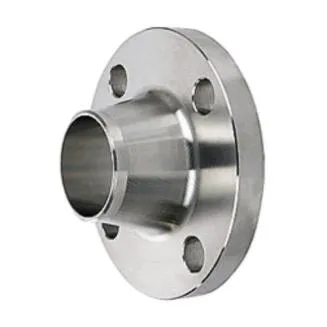-
Cangzhou Yulong Steel Co., Ltd.
-
Phone:
+86 13303177267 -
Email:
admin@ylsteelfittings.com
- English
- Arabic
- Italian
- Spanish
- Portuguese
- German
- kazakh
- Persian
- Greek
- French
- Russian
- Polish
- Thai
- Indonesian
- Vietnamese
- Zulu
- Korean
- Uzbek
- Hindi
- Serbian
- Malay
- Ukrainian
- Gujarati
- Haitian Creole
- hausa
- hawaiian
- Hebrew
- Miao
- Hungarian
- Icelandic
- igbo
- irish
- Japanese
- Javanese
- Kannada
- Khmer
- Rwandese
- Afrikaans
- Albanian
- Amharic
- Armenian
- Azerbaijani
- Basque
- Belarusian
- Bengali
- Bosnian
- Bulgarian
- Catalan
- Cebuano
- China
- China (Taiwan)
- Corsican
- Croatian
- Czech
- Danish
- Esperanto
- Estonian
- Finnish
- Frisian
- Galician
- Georgian
- Kurdish
- Kyrgyz
- Lao
- Latin
- Latvian
- Lithuanian
- Luxembourgish
- Macedonian
- Malgashi
- Malayalam
- Maltese
- Maori
- Marathi
- Mongolian
- Myanmar
- Nepali
- Norwegian
- Norwegian
- Occitan
- Pashto
- Dutch
- Punjabi
- Romanian
- Samoan
- Scottish Gaelic
- Sesotho
- Shona
- Sindhi
- Sinhala
- Slovak
- Slovenian
- Somali
- Sundanese
- Swahili
- Swedish
- Tagalog
- Tajik
- Tamil
- Tatar
- Telugu
- Turkish
- Turkmen
- Urdu
- Uighur
- Welsh
- Bantu
- Yiddish
- Yoruba

Ago . 11, 2024 21:32 Back to list
Exploring Various Types of Flanges and Their Unique Applications in Industrial Settings
Understanding Different Flange Types A Comprehensive Overview
Flanges are essential components in piping systems, playing a crucial role in connecting different parts of the system, such as pipes, valves, pumps, and other equipment. The diversity of flange types available in the market caters to a variety of applications across multiple industries, including oil and gas, chemicals, water treatment, and manufacturing. This article provides a comprehensive overview of the most common flange types, their features, and their applications.
1. Weld Neck Flange
Weld neck flanges are characterized by a long neck that can be welded to the pipe. This design allows for a gradual transition from the flange to the pipe, which helps to withstand high pressure and temperature. Weld neck flanges are often used in high-pressure applications, making them suitable for industries such as oil and gas and power generation. Their ability to handle stress and pressure makes them a reliable choice for critical systems.
2. Slip-On Flange
Slip-on flanges are designed to slide over the pipe before being welded in place. This type of flange is easier to align and install, making it a popular choice for low-pressure applications. Slip-on flanges are commonly used in water supply and chemical processing systems. Although they do not withstand as much pressure as weld neck flanges, their cost-effectiveness makes them an attractive option for many projects.
3. Blind Flange
Blind flanges are solid flanges without a hole in the center. They are primarily used to seal the end of a piping system, preventing the flow of liquids or gases. Blind flanges are often found in systems requiring occasional maintenance, as they can be easily removed and replaced. Their durability and ability to handle high pressure make them common in oil and gas and petrochemical installations.
4. Socket Weld Flange
different flange types

Socket weld flanges are designed with a socket that the pipe fits into. The pipe is then welded to the flange, creating a strong connection that is suitable for high-pressure applications. These flanges are typically used in smaller diameter pipes and are favored in industries such as nuclear and chemical processing due to their resistance to leakage.
5. Threaded Flange
Threaded flanges come with internal threads that allow them to be screwed onto a pipe. This type of flange is advantageous where welding is not feasible or when quick disassembly is needed. Threaded flanges are often used in gas and oil applications, particularly in infrastructures where flanges may need to be removed regularly for maintenance.
6. Lap Joint Flange
Lap joint flanges are designed to be used with a matching stub end. These flanges allow flexibility, as they can be easily aligned, disassembled, and reused. Lap joint flanges are commonly used in applications involving high-temperature and high-pressure fluids, particularly in the chemical industry.
7. Raised Face Flange
Raised face flanges feature a raised area around their circumference, which increases the contact areas between the flange and the gasket. This design enhances the ability to contain pressure and prevents leaks. Raised face flanges are prevalent in various industries, including petrochemical, food and beverage, and pharmaceuticals.
Conclusion
Understanding the different types of flanges and their specific applications is essential for engineers and technicians working with piping systems. The choice of flange type depends on several factors, including pressure, temperature, and fluid properties. By selecting the appropriate flange for a given application, professionals can ensure the safety, reliability, and efficiency of their piping systems. With advancements in technology and materials, the flange industry continues to evolve, offering innovative solutions for an ever-expanding range of applications.
Latest news
-
ANSI 150P SS304 SO FLANGE
NewsFeb.14,2025
-
ASTM A333GR6 STEEL PIPE
NewsJan.20,2025
-
ANSI B16.5 WELDING NECK FLANGE
NewsJan.15,2026
-
ANSI B16.5 SLIP-ON FLANGE
NewsApr.19,2024
-
SABS 1123 FLANGE
NewsJan.15,2025
-
DIN86044 PLATE FLANGE
NewsApr.19,2024
-
DIN2527 BLIND FLANGE
NewsApr.12,2024
-
JIS B2311 Butt-Welding Fittings LR/SR 45°/90° /180°Seamless/Weld
NewsApr.23,2024











